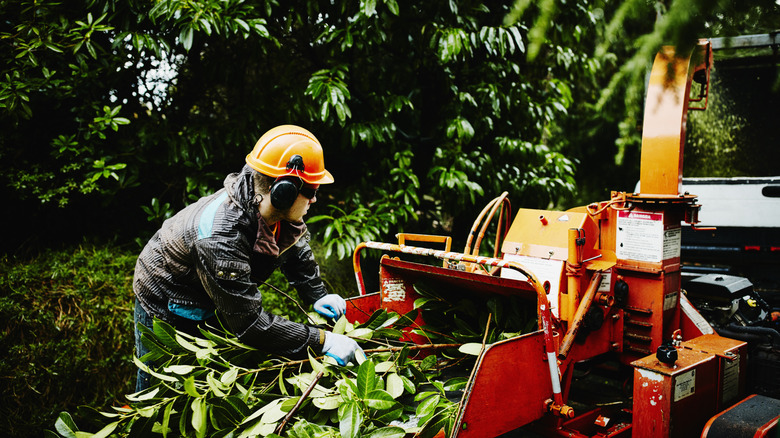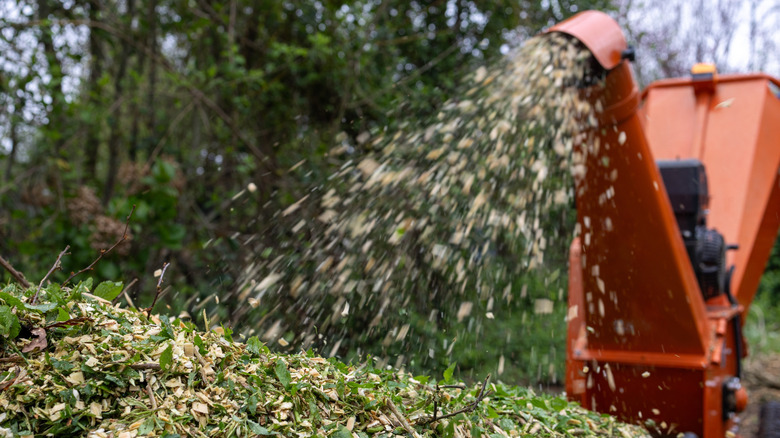Safety Tips For Your Wood Chipper Rental You Need To Know
We may receive a commission on purchases made from links.
A wood chipper is a great tool for clearing up the yard. Renting a high-capacity model can make tree removal a breeze, while smaller versions handle storm debris and prunings, ready for adding to the compost heap. However, wood chippers are dangerous if not treated with caution. While people falling into them may seem like something out of a horror movie, sadly, it does happen. Fortunately, there are a number of straightforward safety tips for your wood chipper rental that should ensure you get the job done without incident.
There's often confusion about tree shredders vs. wood chippers. In this case, we're talking about the latter, which are heavy-duty machines you'll likely rent, rather than lighter-duty models you might buy. Nevertheless, in terms of safety tips, the two should be treated the same. Even if the machine can only shred a twig the size of your finger, imagine what it would do to your actual finger.
Before you feed in your first branch, read the manual so you understand how the machine works and how to stop it in an emergency; safety devices differ between models. Also, put on your personal protective equipment (PPE). That's a hard hat, goggles, face mask, and ear defenders. For example, this NoCry Industrial Chainsaw Helmet has a visor and ear muffs and sells for under 40 bucks. Wear strong gloves and don't forget sturdy boots to protect your feet and so you don't slip. Ensuring the machine's stability, positioning yourself away from the infeed, knowing when to stop the device, and maintaining focus are other tips for operating a wood chipper rental safely.
Safe operation of your rental wood chipper
Clear the site where you're going to put the wood chipper, so that there are no trip hazards. Make sure both you and the machine are stable. In their guidance for professionals, the Occupational Safety and Health Administration (OSHA) warns about "caught in" and "struck by" accidents, which accurately describes the two main dangers. So, make sure all guards are in place. Stand to the side of the infeed rather than directly behind it. Watch out for stones, bits of fence wire, or other objects. These need to be removed so you only feed wood or plant material into the chipper.
Direct the discharge chute where it's not going to cause a hazard. Whenever practical, work with a buddy. One of you should stay as close as possible to the machine's emergency stop devices. Never reach in if a branch has not gone through; use the wooden push tools to handle the branch once it's gone into the infeed chute. If the machine jams, never, ever, attempt to clear it without turning it off and waiting for the blades to stop.
Focusing on the task is vital. Kids often like to help in the yard, but this is definitely the one time when you want to give them something else to do. If you've got a dog, it's best kept indoors while you work, so there's no risk you'll get distracted. Okay, you're good to go. Whether you choose to rent or buy a wood chipper, following a few simple, sensible safety tips will ensure that it's only the wood that ends up in smaller pieces.

